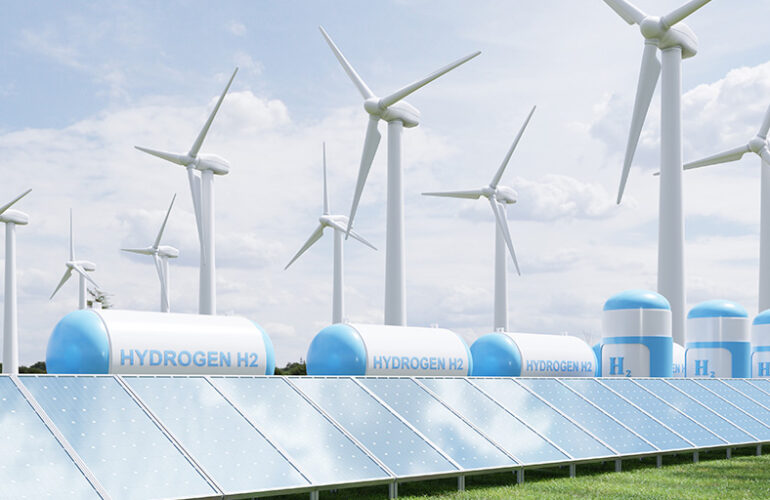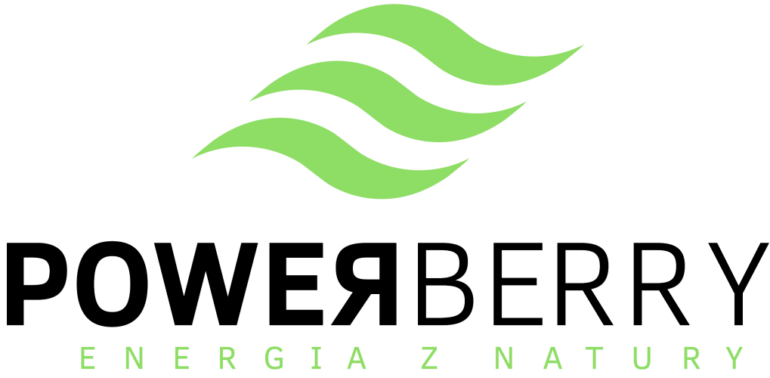HYDROGEN PRODUCTION SYSTEMS
Our electrolyzers leverage the latest technologies, transforming renewable energy into hydrogen, the cleanest and most efficient energy storage. Depending on specific requirements, we employ various technologies, such as:
1. Alkaline Electrolysis: A Proven and Cost-Effective Solution
Alkaline electrolysis is a classic, well-established hydrogen production method that has been successfully used in industry for many years. In this process, water electrolysis is performed using an alkaline solution, such as potassium or sodium hydroxide, which acts as a current conductor between the electrodes.
Advantages of Alkaline Electrolysis Technology:
- Low Operating Costs: Alkaline electrolysis is relatively inexpensive to operate, making it an attractive option for large-scale hydrogen production. It is widely used in scenarios where energy costs are significant for project profitability.
- Proven Technology: Alkaline electrolysis is one of the most developed hydrogen production methods, used for decades. Its technology is well-documented, reliable, and easy to scale, making it advantageous for industrial applications.
- High Reliability: The use of alkaline aqueous solutions instead of special membranes minimizes the risk of failure and reduces maintenance costs, ensuring stable hydrogen production.
- Application Flexibility: Thanks to its simple construction and minimal equipment requirements, alkaline electrolysis systems can be applied in a wide range of projects, from industrial installations to smaller, local hydrogen production systems.
Alkaline electrolysis remains one of the fundamental and cost-effective choices for large-scale hydrogen producers, especially in projects where maintaining low operational costs while ensuring reliability and high efficiency is essential.
2. Proton Exchange Membrane (PEM) Electrolysis: An Efficient Process for Rapid Response to Energy Supply Variations.
Proton Exchange Membrane (PEM) electrolysis is a modern and highly efficient hydrogen production technology that utilizes a specialized proton-exchange membrane, known as the PEM (Proton Exchange Membrane). Unlike traditional alkaline processes, PEM electrolysis is optimized for rapid response to energy supply fluctuations, making it an excellent choice for integration with intermittent renewable energy sources, such as solar and wind farms.
Advantages of PEM Technology:
- High Energy Efficiency: The PEM electrolysis process is highly efficient, using less energy per unit of hydrogen produced. This reduces operational costs, which is particularly important for large industrial installations.
- Response to Energy Supply Variations: PEM systems can instantly respond to fluctuations in energy supplied from variable renewable sources. This allows for effective utilization of excess renewable energy and adapts to their fluctuating production characteristics.
- Compact Design and High Power: Due to the use of a proton membrane, PEM electrolyzers are more compact and can operate at higher pressures than alkaline electrolyzers. Their compact design enables easy integration, even in smaller installations.
- Safety and Purity of Production: The PEM membrane is selective and only permits hydrogen ions, preventing the mixing of oxygen and hydrogen, which enhances process safety and the purity of the produced gas.
- Flexibility and Wide Range of Applications: With high efficiency and compact size, PEM electrolysis is ideal for both large and small projects, including local home installations and mobile hydrogen production units.
PEM electrolysis is a future-ready technology in hydrogen production, particularly in the context of renewable energy sources. It offers high flexibility, is environmentally friendly, and produces clean hydrogen, which can be safely stored and used across various industry sectors.
3. High-Temperature Electrolysis (SOEC): An Advanced Solution for Efficient Hydrogen Production, Particularly Cost-Effective in Large Industrial Installations.
High-temperature electrolysis (SOEC), or Solid Oxide Electrolysis Cell technology, is an advanced technology that delivers exceptionally high hydrogen production efficiency, especially in large industrial installations. This process uses special ceramic electrolytes that operate effectively at temperatures of 700–1000°C. Compared to other electrolysis methods, SOEC enables significantly more efficient conversion of electricity into hydrogen.
Advantages of SOEC Technology:
- High Energy Efficiency: Operating at high temperatures allows for the reduction of electrical energy needed for water splitting, as part of the energy is provided as heat. This lowers the overall hydrogen production cost and is particularly advantageous when heat comes from industrial processes or renewable sources.
- Lower Operational Costs in Large Installations: SOEC technology is especially cost-effective in large industrial installations, where high hydrogen demand aligns with heat recovery capabilities. This allows for efficient production scaling, reducing the unit cost of hydrogen.
- Reduced CO₂ Emissions: SOEC electrolysis, combined with renewable energy sources and the use of excess heat from industrial processes, offers a more environmentally friendly solution, allowing for hydrogen production without carbon dioxide emissions. This supports the goal of zero-emission hydrogen production.
- Integrated Energy Production: High-temperature electrolysis enables simultaneous hydrogen production and heat generation, beneficial for industrial processes requiring large amounts of thermal energy. This adds additional usable value, contributing to reduced overall energy costs for the plant.
- Increased Stability in Long-Term Operation: Ceramic electrolytes used in SOEC technology are highly durable and stable at high temperatures, ensuring system longevity and reducing component replacement frequency.
High-temperature SOEC electrolysis is one of the most advanced and promising technologies in hydrogen production. It is ideal for large industrial plants that can fully utilize waste heat and available energy infrastructure. With these benefits, SOEC technology allows for hydrogen production in a more efficient, environmentally friendly, and cost-effective way, aligning with sustainable energy development strategies.

































